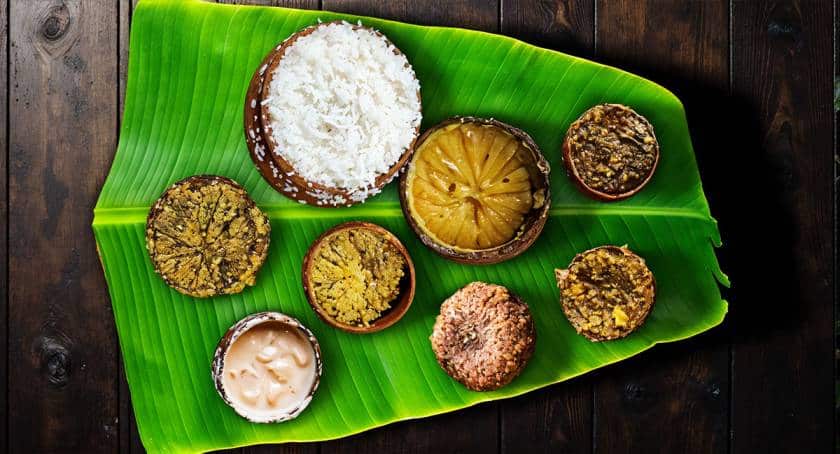Mahaprasad: Jagannath Puri
Odisha, a land steeped in spiritual traditions and rich culinary heritage, is home to one of the most divine offerings in Indian culture—the Mahaprasad of Puri. This sacred feast, prepared in the kitchens of the world-famous Jagannath Temple, is not just food but a representation of devotion, tradition, and spirituality. Revered by millions, Mahaprasad is more than a meal—it is an experience that connects people with divine grace.
This blog examines the origins, preparation, significance, varieties, and experience of tasting the sacred Mahaprasad at the Jagannath Temple in Puri.
The Divine Origins of Mahaprasad
Mahaprasad, meaning “great offering,” is a significant part of Hindu rituals, especially in Puri’s Jagannath Temple, one of India’s Char Dham pilgrimage sites. According to tradition, devotees offer the food to Lord Jagannath, an incarnation of Vishnu, who partakes in it before distributing it among themselves.
The temple’s rituals dictate that the food is first offered to Maa Bimala, a manifestation of Goddess Lakshmi, before it is considered Mahaprasad. This unique custom highlights the sacred connection between devotion and nourishment. The temple kitchens, known as Rosha Ghara, are said to be the largest in the world, feeding thousands of devotees daily. The entire process, from cooking to distribution, is infused with devotion and strict adherence to temple traditions.
The Grand Preparation of Mahaprasad
The temple cooks prepare Mahaprasad following age-old rituals and cook it uniquely. They believe that divine intervention guides the entire process.
- Cooking in Earthen Pots: Temple cooks use earthen pots stacked one above the other to prepare Mahaprasad on wood-fired stoves known as Chulahs. Astonishingly, the pot placed at the top gets cooked first, followed by the ones below—a method defying conventional cooking practices and attributed to divine grace.
- No Use of Gas or Modern Equipment: Unlike modern kitchens, the temple cooks (known as Suaras) follow ancient traditions, using only firewood and earthenware. This ensures that the sanctity of the food remains intact, untouched by modern influences.
- Cooking for the Deities First: The temple cooks prepare the food without onions, garlic, or artificial flavoring. They use pure desi ghee for everything, making the meal rich, wholesome, and sattvic (pure). Once the cooks prepare the food, they offer it to Lord Jagannath, Balabhadra, and Subhadra before distributing it among devotees.
The Varieties of Mahaprasad
Mahaprasad is renowned for its 56 different items, popularly called Chhappan Bhog. These include rice, lentils, vegetables, and sweets, all prepared traditionally. Below are some of the key items:
- Rice Dishes
- Ghee Anna – Rice cooked with ghee, offering a rich and fragrant flavor.
- Kanika – Lord Jagannath’s favorite is Kanika, a sweet rice dish with ghee and jaggery.
- Khechudi – A simple yet flavorful khichdi made with lentils and spices.
- Dal (Lentils)
- Dalma – In a typical Odia meal, cooks temper lentils with ghee and cook them with vegetables to prepare Dalma.
- Mitha Dal – Mitha Dal is a lentil dish with a hint of sweetness.
- Vegetable Curries
- Besara – A traditional dish made with vegetables cooked in mustard paste.
- Saga Bhaja – Fried leafy greens offer a nutritious touch to the meal.
- Mahura – A unique Odia vegetable dish with a distinct taste.
- Sweets and Desserts
- Kheer – A creamy-textured sweet rice pudding is called kheer.
- Poda Pitha – A traditional Odia cake made of rice, coconut, and jaggery, slow-cooked for an enhanced flavor.
- Khaja – One of the temple’s most well-known offerings is a crispy, deep-fried sweet pastry.
Devotees believe that these dishes carry divine blessings and hold immense spiritual significance.
Significance of Mahaprasad in Devotees’ Lives
Mahaprasad is not just a meal but a profoundly spiritual experience. It holds great significance in the lives of devotees:
- A Symbol of Divine Blessings: Eating Mahaprasad is equivalent to receiving blessings directly from Lord Jagannath. Devotees believe consuming it removes negative karma, purifies the soul, and bestows spiritual merit.
- A Part of Rituals and Festivities: People relish Mahaprasad at the temple, and it plays an essential role in religious ceremonies, weddings, and festivals in Odia households. People share it as a token of divine blessings among family and friends, spreading love and positivity.
- Community Bonding: The tradition of serving Mahaprasad at Ananda Bazaar brings together people from all walks of life. It fosters equality as devotees, regardless of caste or status, sit together and partake in this sacred meal. This communal experience strengthens bonds and promotes harmony in society.
How to Experience Mahaprasad in Puri?
If you are visiting Puri, here’s how you can enjoy Mahaprasad:
- Visit the Jagannath Temple: Non-Hindus cannot enter the temple, but devotees can buy and enjoy Mahaprasad at Ananda Bazaar, a dedicated area within the temple premises.
- Get Mahaprasad from Outside Vendors: Some authorized stalls outside the temple also sell Mahaprasad, allowing visitors to take home this divine offering.
- Participate in Special Rituals: During major festivals like Rath Yatra, priests grandly prepare Mahaprasad and distribute it among thousands of devotees. Attending these occasions adds to the spiritual experience.
Final Thoughts
The Mahaprasad of Puri is more than just food; it is a sacred experience that offers divine blessings, rich flavors, and a deep spiritual connection. Whether you are a devotee or a traveler, tasting this blessed feast at Jagannath Temple is a once-in-a-lifetime experience.
With its unique preparation methods, divine significance, and unforgettable taste, Mahaprasad remains one of Jagannath culture’s most revered aspects. If you ever visit Puri, don’t miss the opportunity to savor this heavenly offering—because Mahaprasad is not just a meal; it is the food of the gods!


